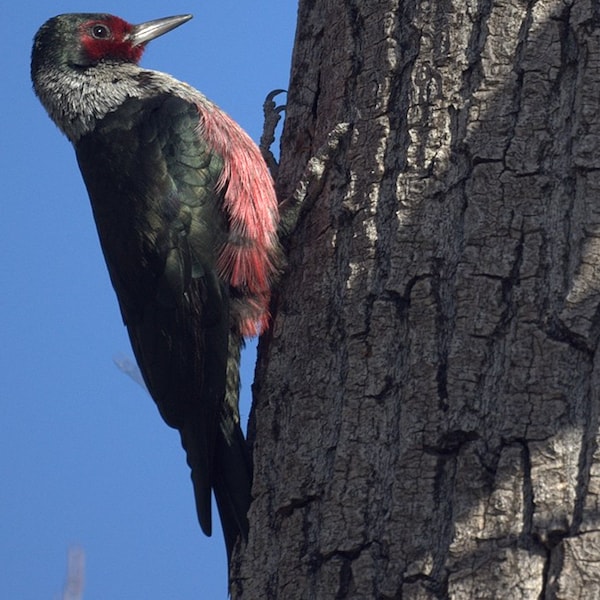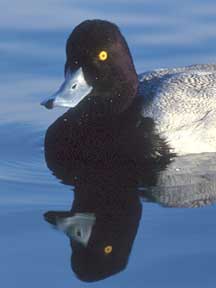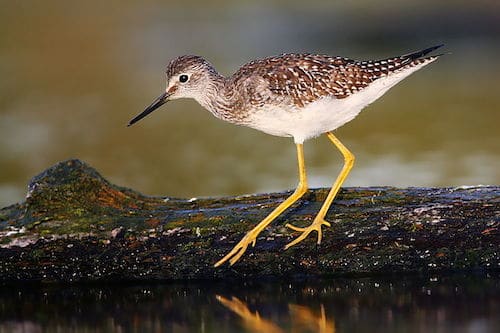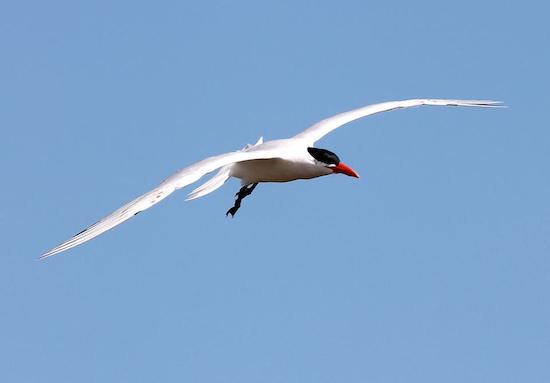Look for
Lewis’s woodpecker is a medium-sized bird that was named after Meriwether Lewis who discovered the bird during his famous expedition. It has a dark greenish-black hood, black, wings and tail, and a dark crimson face. It has a gray collar and chest and a pinkish-red belly. Its bill and legs are both black. In poor lighting, it can look all black in flight. Its flight is crow-like, with rowing wingbeats.
Listen for
Lewis’s woodpecker’s call is low, grating series of notes churrr, churrr. It also emits a sneezing sound and a squeaky, descending rik rik rik.
Find it
Lewis’s woodpecker can be found in the western United States as well as parts of southwestern Canada. Some birds breed in the southernmost parts of British Columbia and Alberta south into northern Washington, Idaho, and Montana. These birds migrate south for the winter, settling in southern California and stretching east to northern Texas. Other Lewis’s woodpeckers live year-round in areas between these breeding and wintering grounds. Lewis’s woodpecker’s habitat is open cottonwood, pine, or oak groves, especially near rivers.
Diet
Lewis’s woodpeckers feed on a wide variety of flying insects as well as fruits, acorns, and berries. During the breeding season, it forages by flying and catching insects midair—like a flycatcher. It flies back and forth between vantage points high in trees, waiting for the opportunity to snatch its prey. In the fall, it harvests acorns and other nuts, and caches them to be eaten in the winter. Unlike most woodpeckers, it generally doesn’t excavate trees for boring insects, but gleans the surface of tree bark.
Nesting Behavior
The Lewis’s woodpecker chooses the cavity of a tree, often a dead one, or a tree limb for its nest. It sometimes opts for man-made objects such as an electric pole. The female lays 4-9 plain, white eggs. Both parents incubate the eggs for 12-16 days before hatching, and both care and feed the young until they leave the nest after 4-6 weeks. Then, the parents and young may still live in close proximity for several additional weeks.




